The Year of Innovation
On Thursday, January 26th, 2017 in Boating Destinations, Types Of Boats.
Lexus Goes from Land to Yachts 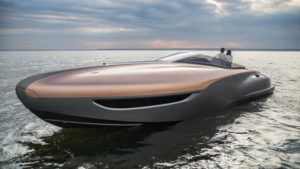
Lexus has released its fully redesigned flagship, the LS sedan. The Lexus Sport Yacht, although much smaller than any actual ‘yachts’ it is the closest thing that automakers will get as of right now. According to Toyota, the idea for the boat came about when the company’s CEO was trying out one of the marine divisions new yachts that use Toyota diesel engines. He wanted to see what a sport, luxury yacht using a Lexus design would look like.
More than a clay model, this is a fully functional nautical machine. It is constructed from carbon fiber by Marquis-Carver Yacht Group in Wisconsin, and has a pair of V8 engines shared with the Lex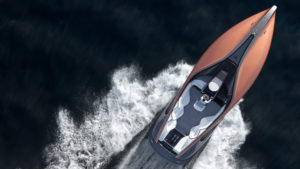 us RC F (and GS F, and LC500). Compared with the automotive applications, each engine makes a bit less power at 440 horsepower. With two engines, roughly 880 horsepower can propel the boat to a top speed of 49 mph.
us RC F (and GS F, and LC500). Compared with the automotive applications, each engine makes a bit less power at 440 horsepower. With two engines, roughly 880 horsepower can propel the boat to a top speed of 49 mph.
The Lexus Sport Yacht comes complete with many luxury amenities. There is seating for eight on the deck. Two of those seats fold out from either side of the captain’s chair. The captain also has access to a pair of touchscreens, a small one in the wheel and a massive one ahead of it for instruments and other information. The forward passenger cabin is loaded with leather, wood, air conditioning, a table, and sofa seating for six. The yacht’s galley has sink, refrigerator, and stove, and the bathroom comes complete with a shower.
The yacht is still a concept at the moment. That being said, luxury automakers, including Astin Martin and Mercedes, have started competing in the yacht market. And while Toyota’s marine division hasn’t built a pleasure boat since the Epic line, it probably won’t be too difficult for the company to start building this Lexus.
The World’s First Green-energy Boat Prepares for a Six Year Voyage around the World
Humans have sailed for thousands of years, but never in a vessel like the Energy Observer. The first self-suf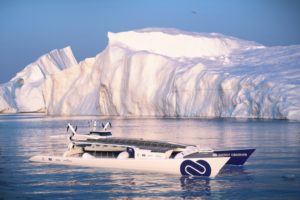 ficient boat powered only by clean, energy emission free energy, and not just the wind in its sails – will start its six year trip around the world in the spring.
ficient boat powered only by clean, energy emission free energy, and not just the wind in its sails – will start its six year trip around the world in the spring.
Energy Observer, a former race boat now equipped with solar panels, wind turbines, and hydrogen fuel cells, will use sun, wind and self-generated hydrogen to power batteries that run the boats electric motors. The $5.25 million boat is now in a French shipyard before heading to Paris for the first of 101 stops in 50 countries.
The boat converts seawater into hydrogen fuel using a chemical process called electrolysis. It is also equipped with a kite sail. The boat is an important step forward and consistent with this proposed path to 100 percent clean, renewable energy worldwide.
The Mayflower Autonomous Ship Project
A unique project that entails a partnership between Plymouth University, autonomous marine vessel company MSubs, and Shuttleworth Design, will seek to recreate the historic Mayflower voyages from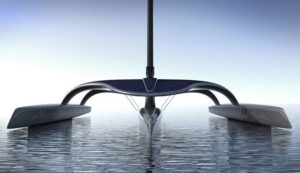 Plymouth to North America, but this time in a decidedly high tech manner. The 32.5 meter long Mayflower Autonomous Ship, or MAS, will be fully fueled by renewable energy sources (mostly solar and fuel cells) as well as traditional sail power, and will carry “a variety of drones” with it which will enable it to carry out experiments during the voyage.
Plymouth to North America, but this time in a decidedly high tech manner. The 32.5 meter long Mayflower Autonomous Ship, or MAS, will be fully fueled by renewable energy sources (mostly solar and fuel cells) as well as traditional sail power, and will carry “a variety of drones” with it which will enable it to carry out experiments during the voyage.
The boat is considered a research vessel, collecting oceanographic, meteorological, and climate data, as well as serving the test bed for other technologies, such as navigation and autonomous sailing systems. The project is part of Plymouth University’s ‘Shape the Future’ fundraising campaign. It is expected to cost a bit over $12 million U.S. dollars.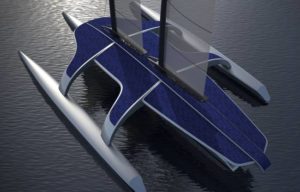
The voyage across the Atlantic could take “as little as 7-10 days with optimal wind conditions” and once the initial crossing has been completed, the MAS could then be sent to circumnavigate the globe to continue its research and testing.
“The civilian maritime world has, as yet, been unable to harness the autonomous drone technology that has been used so effectively in situations considered unsuitable for humans. It begs the question, if we can put a rover on Mars and have it autonomously conduct research, why can’t we sail an unmanned vessel across the Atlantic Ocean and, ultimately, around the globe? That’s something we are hoping to answer with MAS.” – Phaneuf, Managing Director of MSubs.
Shuttleworth Design is designing and building scale models of the boat, which will then be tested in Plymouth University’s Marine Building, after which it will be built by MSubs and tested over the course of about a year before it is launched for its historic voyage in 2020.